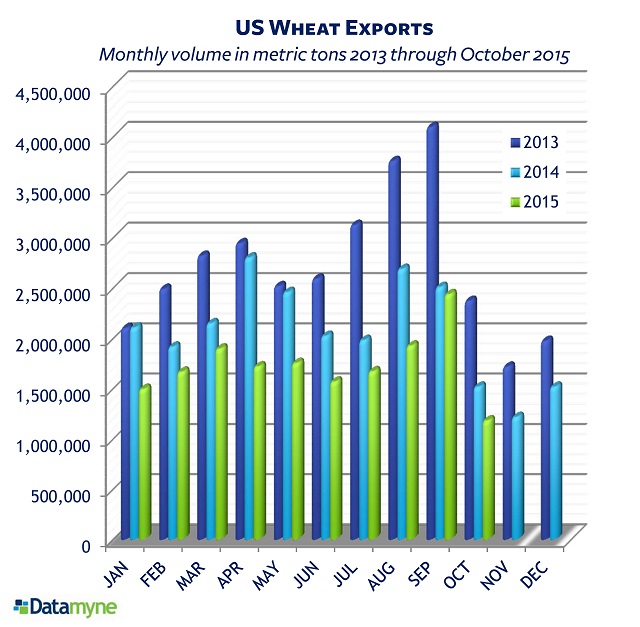Wheat exports are being flattened by the strengthening dollar, as competitors with weaker currencies take US share of the global market for this and other agricultural products.
Generally among the top 3 US agricultural exports (behind soybeans and corn), wheat accounted for $10,271,917,323 worth of exports in 2014. The last forecast from the US Dept. of Agriculture lowers the 2015-16 projection for US wheat exports to 800 million bushels. That would be the lowest volume shipped since 1971-72. The USDA projects 911 million bushels in ending stocks, the biggest supply left on hand since 2009-10.
As the Wall Street Journal reports, US farmers were already contending with softening demand and lower prices. Now the strong dollar is making US wheat too pricey for customers abroad, who can find cheaper sources in Europe.
Our data shows a big fall-off in exports. Datamyne’s monthly rankings of top US agricultural exports posted a -14.69% drop in value of wheat exports in peak-month September compared with September 2014. The value of October’s wheat exports fell -33.85% compared with the same month a year ago.
Here’s how wheat export volumes stack up month-by-month, from 2013 through this October:
Wheat is not the only US agricultural product feeling the strong dollar’s negative effects on overseas sales. October’s ranking report shows top-ranked ag export (by value) soybeans down -17.02%, and second-ranked corn off -21.74%, compared with October 2014. Overall, the value of US agricultural exports January through October this year has fallen -10.33% compared with 2014.
Related:
- Download the monthly US Agricultural Exports & Imports ranking reports from Datamyne’s Free Report Library
- On a Roll: American Lobster Exports




